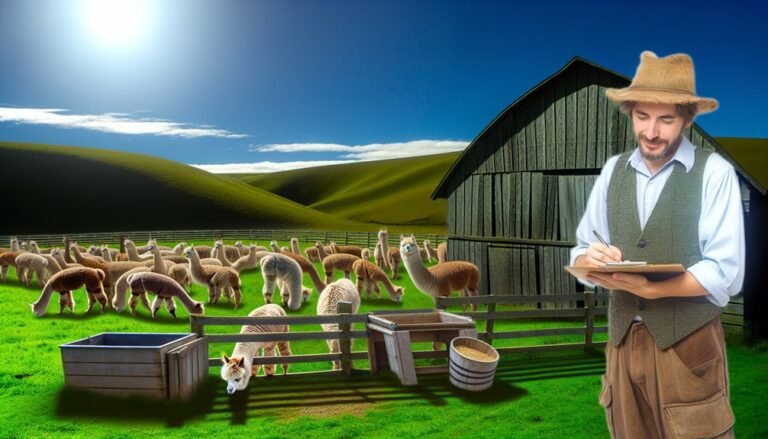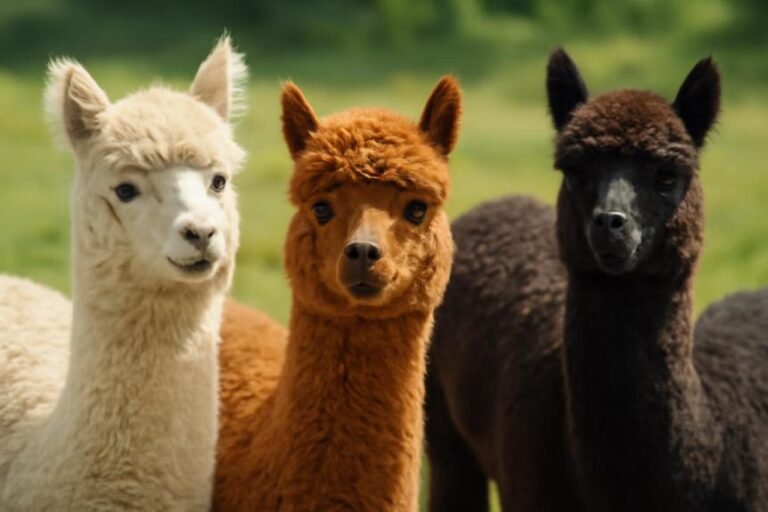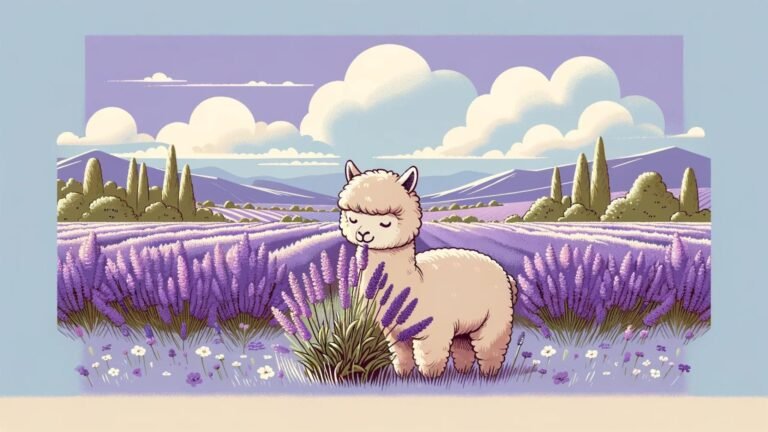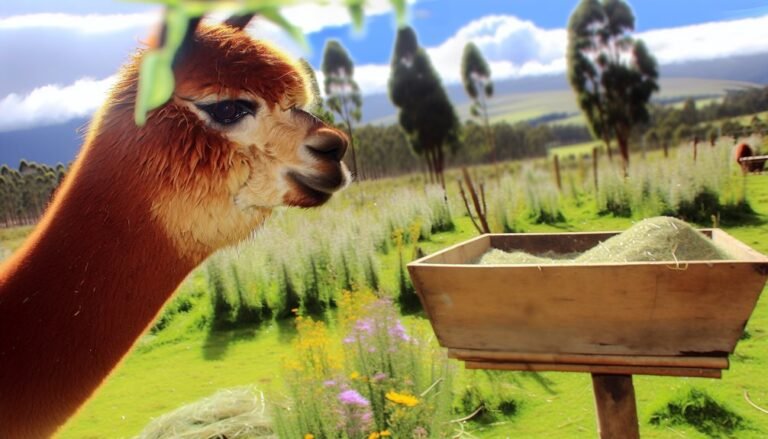3 Best Ways Breeding Improves Alpaca Fleece Quality
You can improve your alpaca’s fleece quality by enhancing genetic traits like fiber diameter and density through selective breeding. Using scientific breeding systems, such as the SRS® method, helps guarantee consistent, data-driven improvements over generations. Pairing alpacas with complementary fleece characteristics and strong expected progeny differences boosts softness and fineness. If you want to truly transform your herd’s fiber quality, understanding these strategies more deeply will give you a clear edge in producing superior alpacas.
Key Takeaways
- Selective breeding targets finer fiber diameter and higher fiber density to enhance softness and fleece quality.
- Utilizing Expected Progeny Differences (EPDs) and fleece histograms enables data-driven selection for superior offspring traits.
- Employing scientific breeding systems like SRS® accelerates consistent improvements in fiber characteristics across generations.
- Pairing alpacas with complementary fleece genetics ensures greater genetic gain and improved fiber fineness.
- Incorporating genetic testing and color genotyping optimizes breeding decisions for predictable, high-quality fleece outcomes.
Enhancing Genetic Traits for Superior Fiber

When you focus on enhancing genetic traits, you can markedly improve alpaca fleece quality by using selective breeding strategies like like-to-like inbreeding and disassortative mating. These methods help refine fiber diameter and increase fiber density, essential factors in superior fleece. Breeding programs that emphasize heritability—around 30% for fiber traits—allow you to target improvements effectively over generations. Utilizing tools like expected progeny differences (EPDs) and fleece histograms lets you predict offspring quality, optimizing your selections. Color genotyping further supports your efforts by forecasting color outcomes while maintaining focus on fiber traits. Prioritizing primary fiber improvements, particularly reducing diameter and eliminating guard hair, plays a significant role in boosting fleece quality. By applying these genetic insights, you guarantee your breeding program consistently enhances alpaca fiber characteristics.
Utilizing Scientific Breeding Systems for Consistent Quality
Although achieving consistent alpaca fleece quality can be challenging, utilizing scientific breeding systems like the SRS® method developed by Dr. Jim Watts offers a proven path. As an alpaca breeder, you’ll appreciate how this breeding program uses genetic selection to improve fiber diameter and density rapidly. By analyzing fleece histograms and Expected Progeny Differences (EPDs), you can make data-driven decisions that elevate your herdsires’ traits, ensuring better fleece quality. Focused breeding efforts backed by these tools allow you to enhance fiber diameter while maintaining quality nutrition to support your animals. This systematic approach transforms breeding from guesswork into precision, helping you consistently produce alpacas with superior fleece, increasing fiber yield and fineness over generations.
Selecting and Pairing Alpacas for Optimal Fleece Characteristics
Since the quality of your alpacas’ fleece largely depends on genetics, selecting and pairing animals with the right traits is essential. Focus on alpacas with lower micron counts—ideally 25 microns or less—to guarantee softness and superior fleece quality. Use genetic testing and color genotyping to predict offspring traits accurately, improving breeding outcomes. Pair alpacas with complementary fleece characteristics, like a male with uniform fiber and a female with fine micron quality, to enhance genetic gain in fleece production. Selecting from lines with high Expected Progeny Differences (EPDs) for fleece weight and fineness further boosts quality. Incorporating these strategies into your breeding program will maximize fleece quality, assuring your herd consistently produces premium fiber through informed genetic selection and strategic pairing.
Frequently Asked Questions
At What Age Should You Stop Breeding Alpacas?
You might wonder about the ideal breeding age for alpacas. Considering health, genetic factors, and reproductive lifespan, it’s wise to stop breeding females by 12-15 years and males by 10-12, adjusting for alpaca management and nutritional needs.
Is There Money in Breeding Alpacas?
You’ll find money in breeding alpacas if you focus on breeding benefits like genetic diversity and fleece characteristics. With smart breeding techniques, careful alpaca care, and a solid cost analysis, you can tap market demand and maximize financial returns ethically.
How Many Times Can You Breed an Alpaca?
You can breed an alpaca once per season due to their 11.5-month gestation period. Ideal age, mating methods, and managing breeding pairs guarantee reproductive health, genetic diversity, fiber characteristics, and proper cria care while considering health considerations and breeding frequency.
How Much Fleece Can You Get From One Alpaca?
You might think fleece weight is fixed, but with good animal health and genetics selection, you can boost fleece density and quality. Shearing frequency and breeding techniques also affect fiber diameter and fleece color, meeting market demand through quality assessment.








Our picks
Alpaca & Wool Felted Sole Inserts: Comfy Upgrade?
Best Alpaca Socks for Hiking: Ultimate Comfort and Durability on Trails
Best Alpaca Halter for Comfort and Control